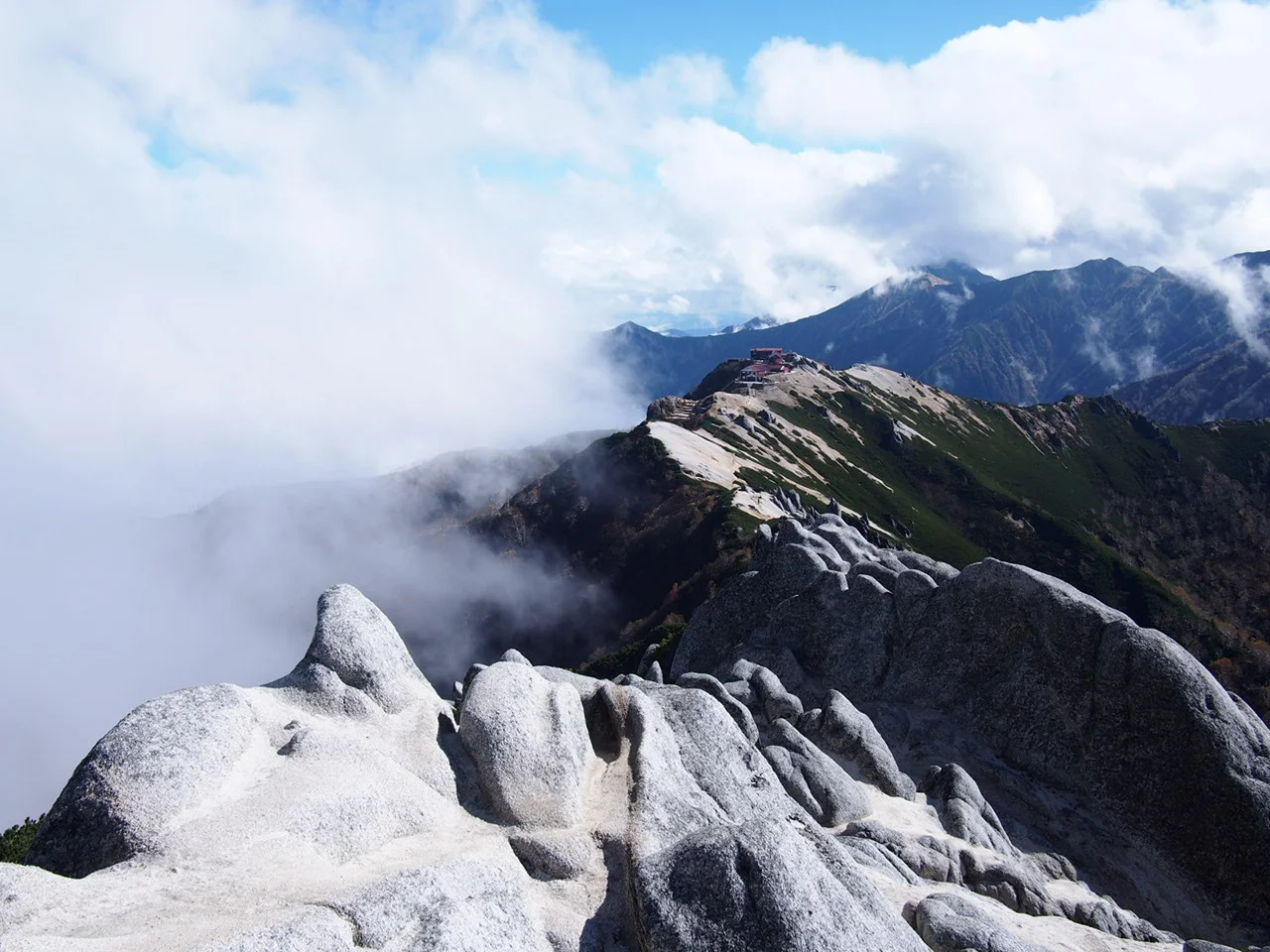An Ode to Active Holidays – Part 2: Castles in the Sky and Black Toes
This article is part two of my Ode to Active Holidays, it continues the report of my recent hiking trip to Japan, picking up on the second day, the first hiking day.
If you missed part one, you might want to go back first for the thoughts in active holidays and the beginning of our free tour to Azumino. If you are mainly interested in the mountain hike up and down Mt. Tsubakurodake, the stay at Enzanso and the panel discussion at the end of the trip, you are good to continue with part two right away.
So, without further ado, let’s go back to Azumino, Nagano Prefecture, to the morning of day two of our tour.
Day 2 – To the Top
The second day of the tour started early: getting up at 5:15, having breakfast at 6:00 and getting ready for the hike. At seven we got group taxis to drive us up to the trailhead at 1,400-meter altitude, where we met our mountain guide, veteran mountaineer Ken. Sadly, the weather was not particular welcoming; it was cloudy with a hint of rain. We got the rain covers out for the backpacks, my giant one, and my wife’s tiny one, and hit the trail.
Fighting up the slippery trail. - Copyright: Life-Sparring.com
The trail was well maintained but in a discrete natural style; steep at times but almost entirely free of concrete steps, as they can be commonly found on Hong Kong hiking trails. Starting out in a thick forest, only over the last two kilometers of the hike did the trail break through the tree cover, opening spectacular panoramic views of the Japanese Alps. By that time the sky also had remarkably cleared out, leaving almost no cloud to spoil the breath-taking scenery.
With a 1,200-meter climb over 8 km, the track was very steadily ascending. There were hardly any descending parts and the flat portion of the track was just about half a km in total. At a slow but steady speed, the ascent over time reassembled almost a straight 30-degree angle, dented only by the regular breaks our group did.
My biggest fear before the hike was running a high heart rate and being not able to follow the group’s speed. It is not uncommon for me to reach heart rates beyond 180 on longer ascents, even at a slow pace and without additional weight. Despite approaching 40 years of age, my HR Max occasionally peaks beyond 200, defying the usual rule of thumb (220 – age).
Thankfully my heart rate held up remarkably well, peaking at a heart rate of 179 and with a decent average of just 155 bpm. That said, I was still extremely grateful for every single one of the breaks.
The hike was a challenge, but at the slow and steady pace well within my limits. I opted for my massive German leather hiking boots, while all other participants wore either light hikers or trail running shoes. Especially towards the end of the hike, I could feel my steps becoming less secure, with muscle fatigue setting in. The boots are fairly forgiving in that situation, like an armor they protect me from bending my ankle. The disadvantage, of course, was the additional weight. With my body weight of 86 kg, the biggest backpack of the group and almost 2 kg of leather at my feet, I was packed like a mule. While the trail was not very technical, the occasional big natural steps challenged my weakest point: hips and quads. Pushing myself up the mountain was pretty much a weight workout for my lower body.
On top of increasing levels of muscle exhaustion, I felt the effects of altitude: light, piercing pain in my head, just when crossing the 2000-meter mark.
All pain and fatigue were forgotten, however when the Hütte Enzanso came into sight. Majestically presiding over a wide mountain ridge, just below the summit of Mt. Tsubakurodake, the word “mountain hut” seemed quite an understatement.
We reached the hut around 1 pm, dropped our packs and immediately continued to the summit of Mount Tsubakurodake (2,762.85 m / 9,064.5 ft), making use of the perfect weather conditions. The summit was just a 15-minute walk from Enzanso, with almost no additional climbing necessary.
There are not many feelings that can compare with standing on a mountain summit, looking into the distance. There is the pride of the accomplishment making it all the way to the top, and at the same time, there is a feeling of humility in the face of the vastness of the world around and beneath you.
After enjoying the moment on the top, we walked back to the hut, tired and dehydrated.
Enzanso – A Wooden Castle in the Sky
Standing in front of the Enzanso the hut looks unassuming. The size of the wooden structure, however, reveals itself once you enter it. Making our way towards our sleeping quarters with tired bare feet, boots in our hands and packs on our backs, it felt like another hike.
The hut can easily fit more than 500 alpinists and according to the company’s president and CEO Kenji Akanuma (Yes, the hut belongs to the Enzanso Group, a family owned private company), has hosted more than 1000 guests at once. During our stay, there were just around 300 guests in the hut, but even at half the intended occupancy and despite the genius architecture, sleeping felt a bit like traveling in the belly of the Mayflower, minus the seasickness and scurvy.
The hut, originally built in 1921, is a true architectonic masterpiece. From the design of the sleeping berths to the dry rooms and the water saving toilets. As water is pumped up several hundred meters from a natural source, the hut does not have showers. Other than that it does not lack any comforts. The store at the entrance area sells a broad range of memorabilia and snacks, the “sun terrace” sells beer and wine at very reasonable prices and recently the hut even introduced a Wi-Fi internet service, currently just available in Japanese though.
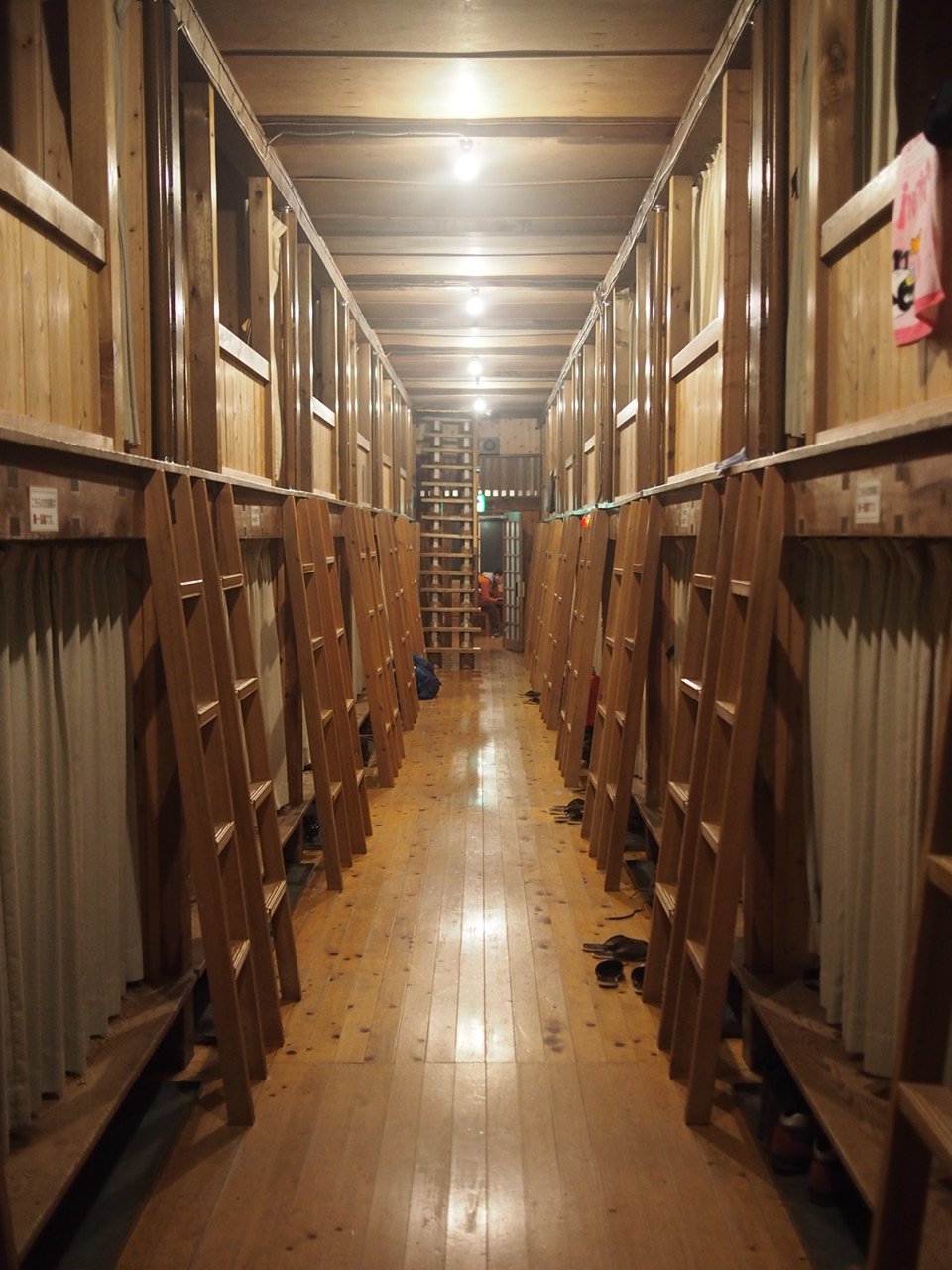
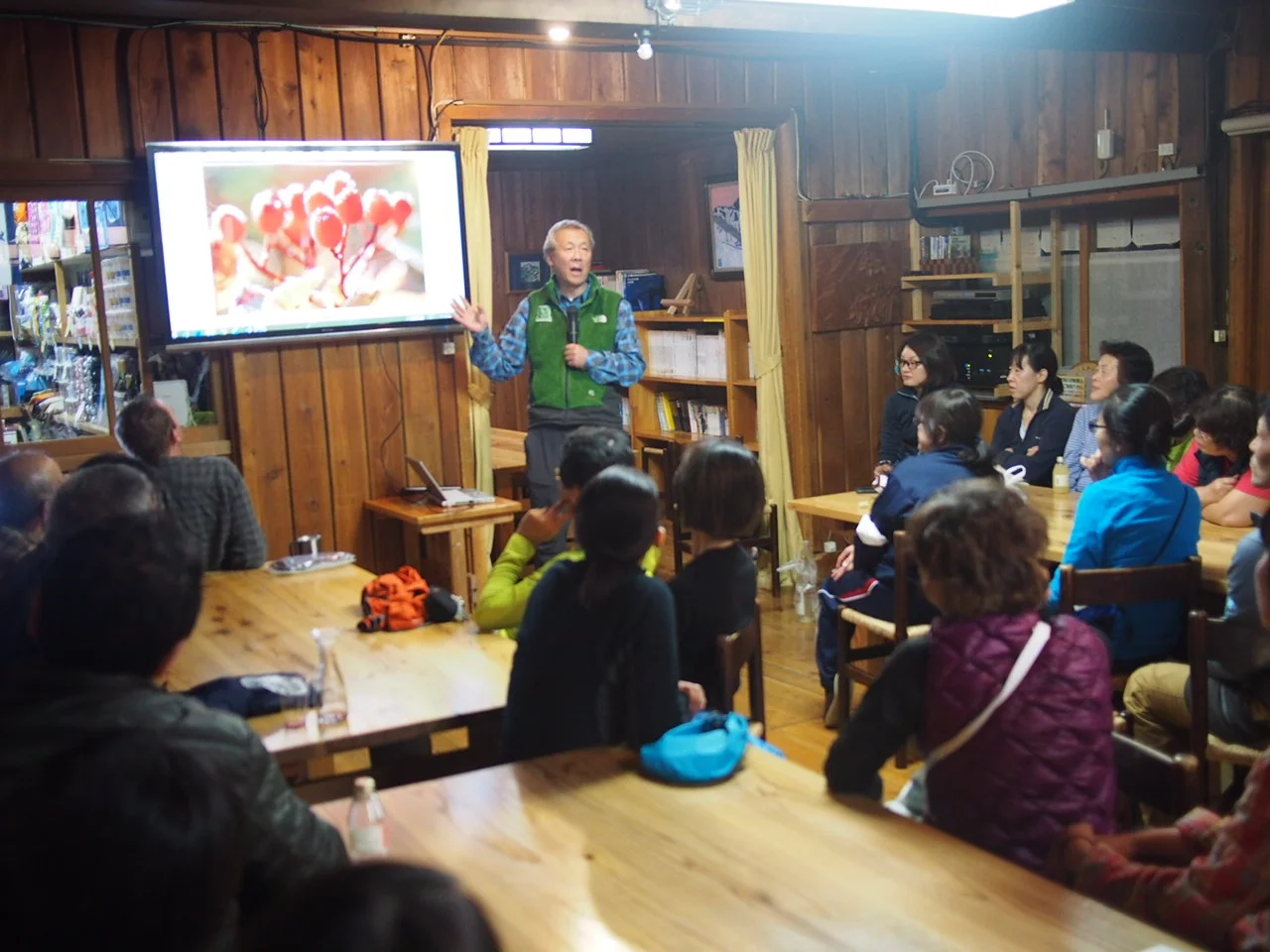
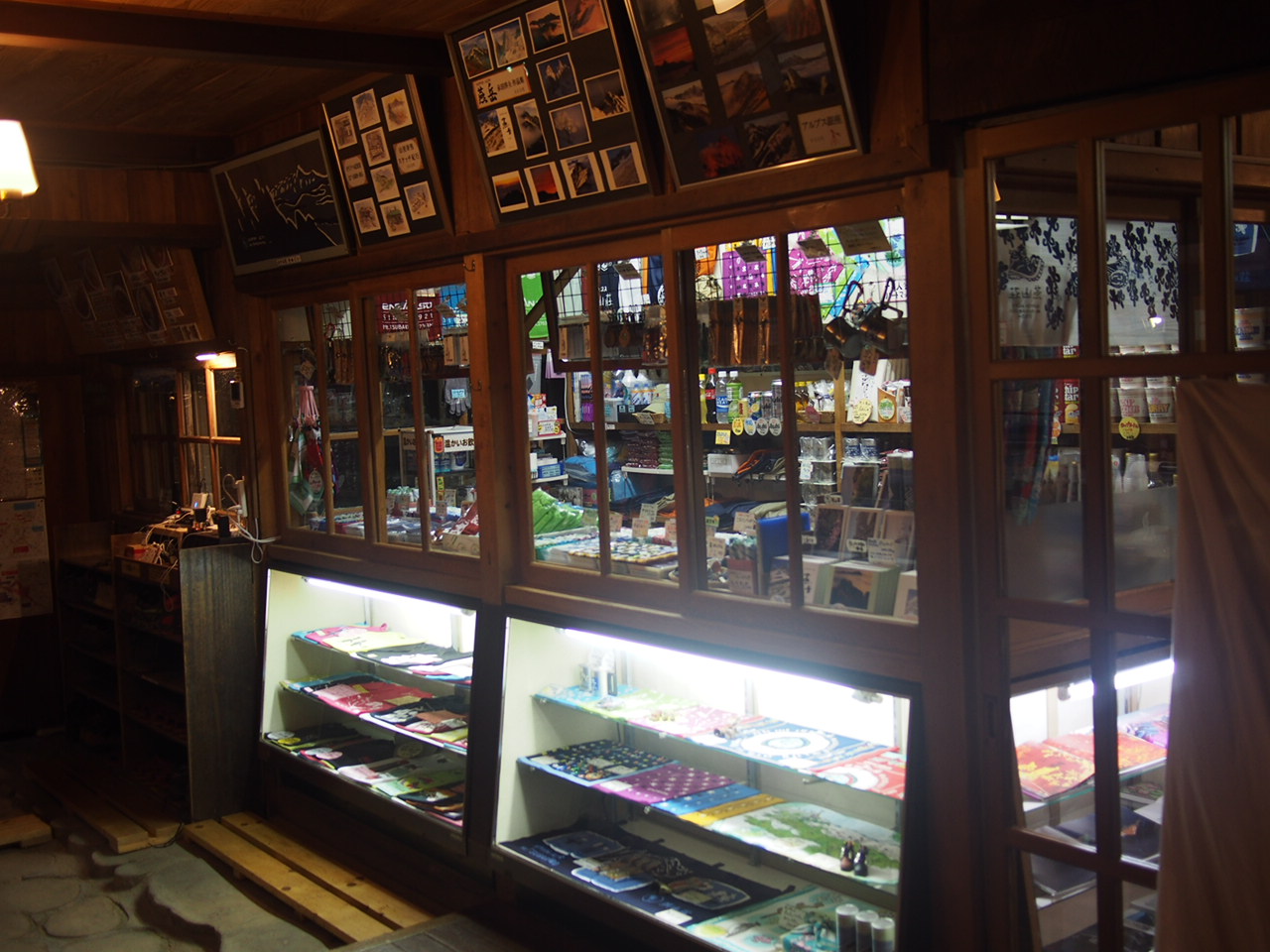
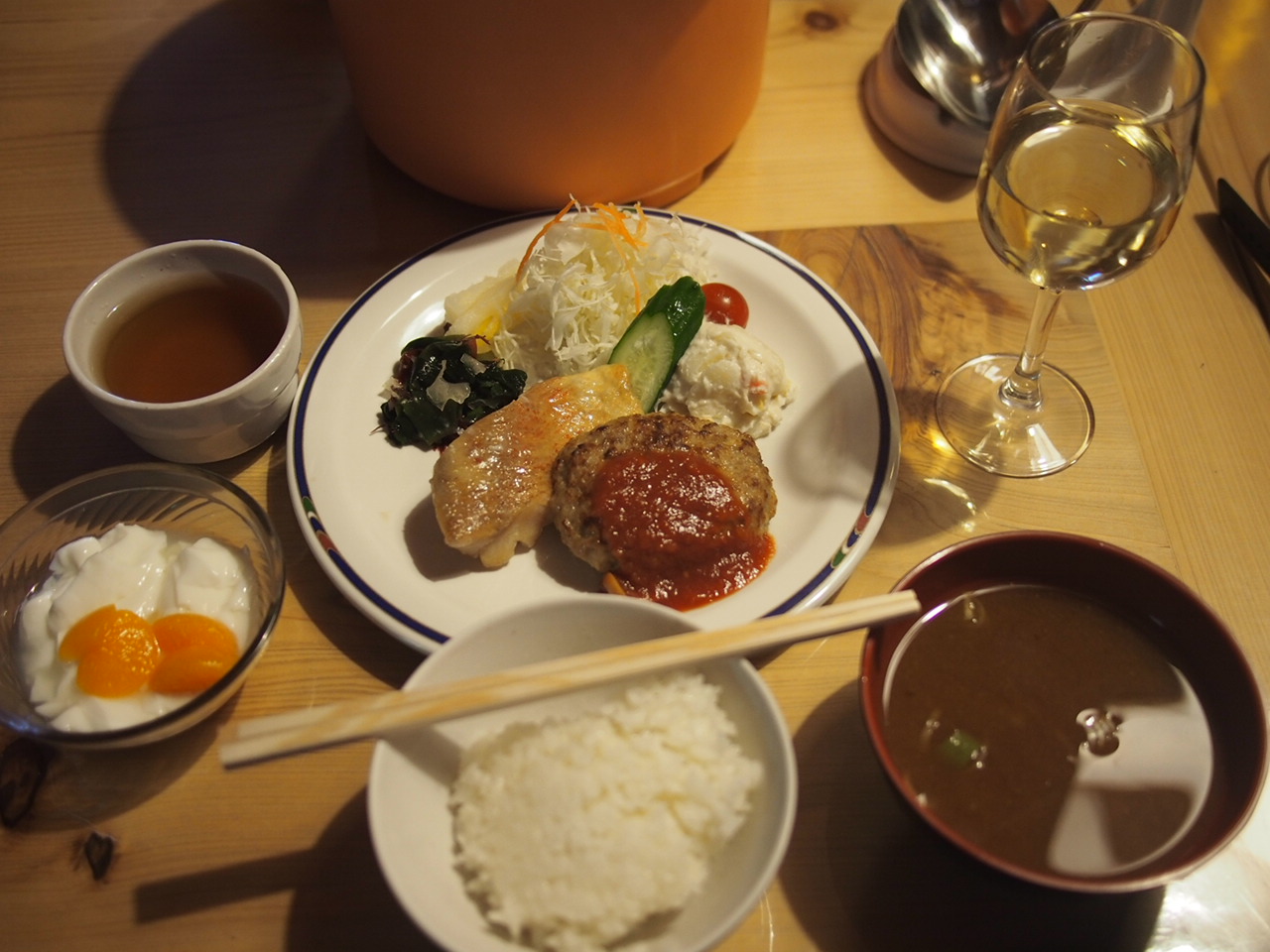
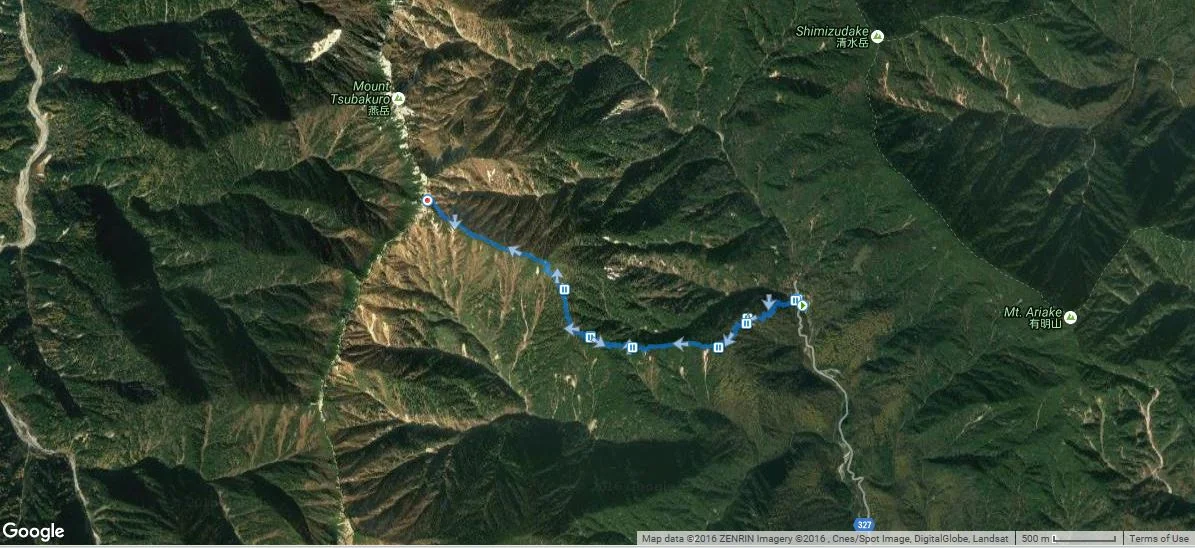
Life in the hut is dictated by the surroundings. With temperatures dropping significantly at dusk the hearty dinner is served at six pm, and the light is switched off at nine pm, just after the Enzanso President finishes his daily photo slideshow and alpine horn performance. The day starts when at 5:15 am the light is switched back on.
We checked in at the hut before 2 pm. While some of our fellow hikers still were hungry for more and explored the tracks, I needed a beer. Before we settled down in the cozy taproom, where our guides were already at their second pitcher of Spanish red wine, I strapped a SpO2 (blood oxygen saturation monitor) on my left index finger. Being the first time in my life at an Altitude of 3000 meters, I wanted to get an idea about the effect on my not acclimatized body.
I will come back to the detailed interpretation of the data in a future Life-Sparring round on breathing and oxygen saturation. Given that my normal SpO2 values are in the mid 90th, the measured basal SpO2 of 84.8 show the significant effect of the altitude. Funnily the oxygen saturation seemed to be ticking up when I was drinking beer (2-4 pm and 6-7 pm). I will dive much deeper into this topic when researching for my experiments with breathing. For the moment I will simply assume that beer is the ultimate cure for altitude sickness.
Before nine we hit our futons. Not being used to the noises of multiple people in proximity I woke up multiple times, feeling either too hot or too cold for most of the night.
Day 3 – Tipping Down on Black Toes
Following the rhythm of life of the hut, the morning began early. After brushing teeth, folding the Futons back and repacking the backpack, now at least half way filled with rubbish, we had a traditional Japanese breakfast. Just as the dinner, the breakfast was excellent for what I would have expected in a mountain hut.
After the breakfast, we were left with approximately 40 minutes, before we would start our descent. Time is relative and 40 minutes can be very short, especially during “brush hour,” when in front of the washroom there is a queue of unwashed hikers and your biggest concern is to be able to conduct your morning business before hitting the trail. I spare you the details, but as most of the Japanese groups were leaving earlier, I managed to get a few quiet minutes.
Just like the previous morning, we started out with a cloudy sky and a decent chance of rain. Just outside of the hut, it was somewhat chilly, so we just took the obligatory group picture and then hit the trail.
Hiking down a mountain is one of the most underrated challenges in the world. While it is far less taxing to the heart, coming down is technically often more challenging than going up and requires a high level of concentration. It also has the tendency to fatigue muscles that you barely use on a regular day.
Around one hour into the descent, I made a huge step downwards and felt my left big toe crashing into the front of my hiking boot. As much as my giant German moon boots protect my ankles from bending, their spacious toe box leaves me just a bit too much room, letting my toes hit the hard leather like a crash test dummy hitting a wall.
Knowing that, I originally planned to tape my big toes before starting the descent, but a wave of crazy optimism or sleepiness that morning must have distracted me from following through with the plan. Now I paid for the lack of preparation and desperately had to try coming down the mountain heel first. As much as I could, I tried to step sideways and avoid stepping down toes first.
Adding the feeling of a crushed toenail to my bad downhill technique had me struggling more on the way down; then I had the previous day getting up. Luckily the speed of the group was still moderate, despite our elite trail runner barely being able to restrain themselves from letting go.
We arrived at the trailhead where we had started the hike before lunch. Luckily the weather held up well; a light rain only started after we took our backpacks off. While most group members unwrapped their lunch boxes, we went straight to the hot spring. One of the most rewarding aspects of hiking in Japan is that quite often a hot spring or at least a traditional ofuru (hot bath) is near. Soaking in a natural hot spring after a demanding hike is a feeling hard to beat.
After the bath, we also devoured our lunch packet (Japanese: bento), this time not rice balls but sticky rice and washed it down with a beer.
A Town Hall Meeting with Mountain Royalty
After everyone was bathed and fed, we boarded our taxis and drove into town for the last and most important stop of the tour. In the very modern town hall / public administrative building of Azumino, not only members of the administration and the local tourist association, but also the chairman of the Enzanso group waited for us. The latter must obviously have been taking the company helicopter, as we took a farewell picture with him in the morning at the hut.
After filling a detailed questionnaire, we had a very open discussion about our experience in Azumino and the potential of the region and the Japanese Alps for international tourism.
As heterogeneous our group was, we all agreed that the region has a major asset with the beauty of the Alpine panorama and the well-maintained infrastructure and that attracting foreign tourist is mainly a communication challenge.
To boost international tourism, tourists need to be aware of the region and the vast system of hiking trails. Potential visitors also need access to the easy booking of accommodation and transportation. A great example of such a booking system in Japan that I suggested Azumino to look at is the Kumano Travel Reservation System. The Tanabe City Kumano Tourism Bureau does an excellent job, offering one-stop travel booking for hiking adventures on the Kumano Kodo. Instead of emailing each guest house by yourself you decide for an itinerary and then book all accommodation in one booking process.
That growing tourism is not free from conflicts became visible, when Mr. Akanuma, President of the Enzanso group revealed that he did not provide an English translation of the Enzanso website, due to experience with foreign hiking groups staying in the hut. On more than one occasion did hiking groups from Asia distract the Japanese tourists from following Mr. Akanuma's evening photo slide show and alpenhorn performance.
To minimize the adverse effects of tourism on the environment and the local structures, Azumino's tourist association might want to focus its advertising events to individual Western tourists with experience in mountaineering.
We were definitely sold and would love to come back for more relaxing, adventurous challenges!








